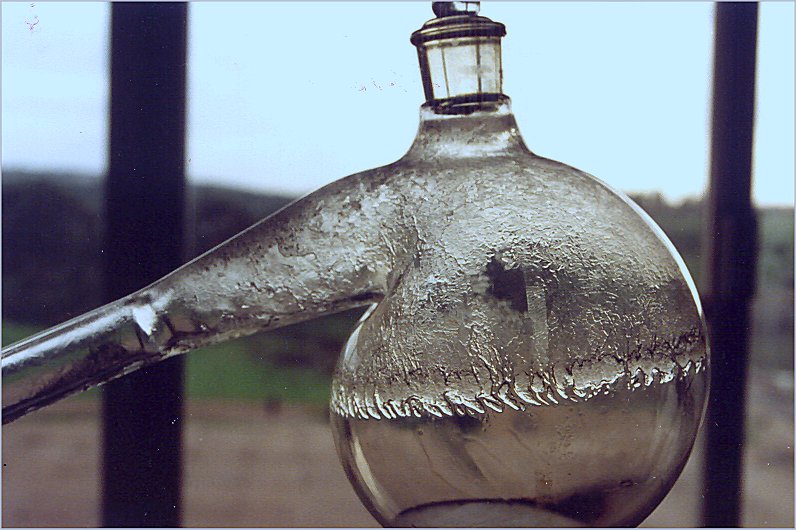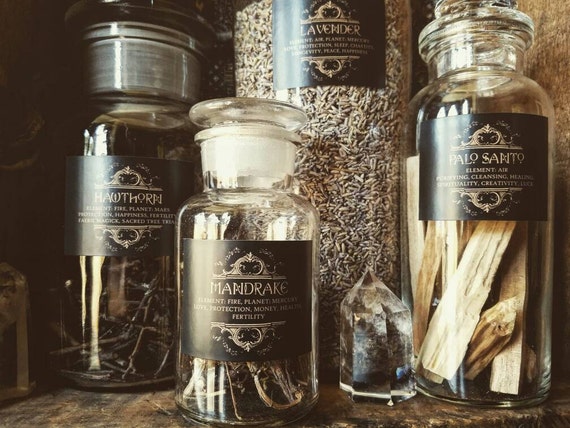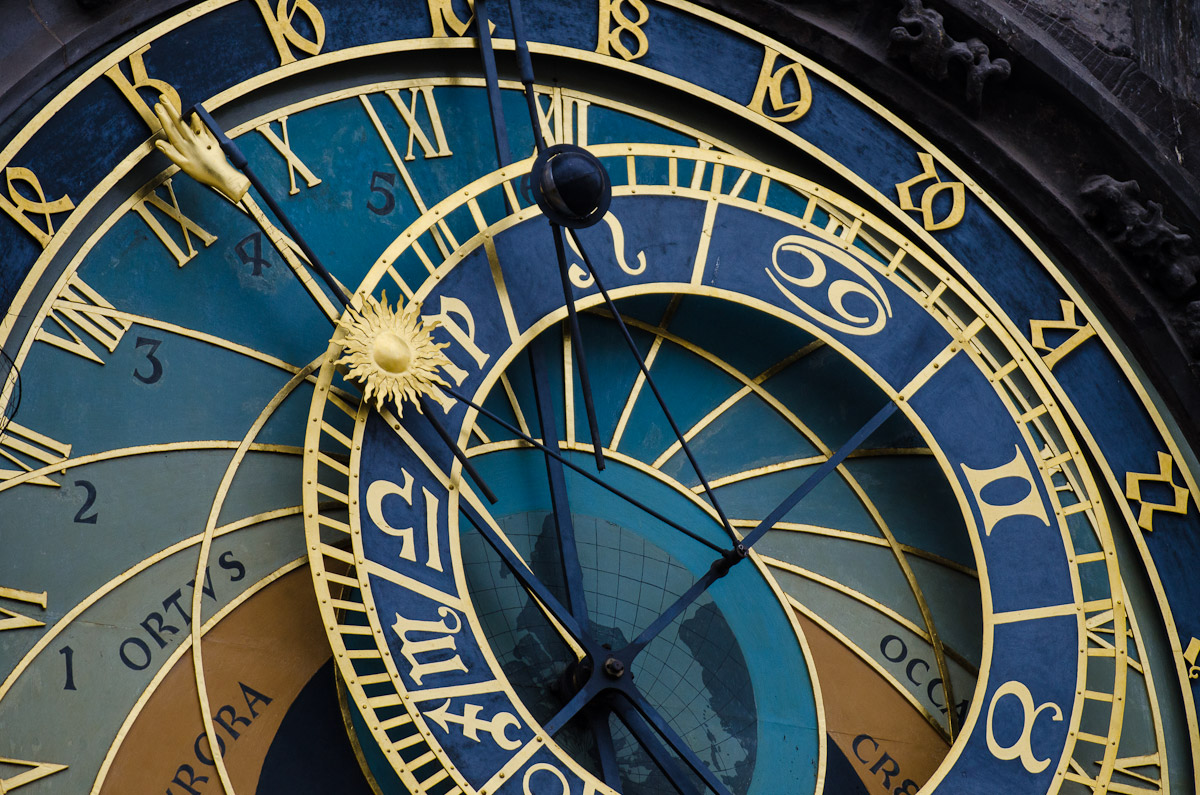Lesson 2) Steam the Stems, Count the Stars
Hello again class! It’s great to see you back again for another week of Alchemy. For the next two lessons we will be dealing with one of my favorite topics, Spagyrics (spa-jeer-icks)! Before we get on with that, I have a few announcements.
As you all know, your O.W.L. exams are this year and it will cover everything from Year Two up through this year. I know how important these exams are so I would like to give all of you as much preparation for them as possible. Today, you will have your first O.W.L Prep assignment. It will cover only material in Year Two. These O.W.L. Prep assignments will hit the key points of the year as a way to test how much you have retained from that specific year. The O.W.L. Prep assignments are completely optional and are available for you to retake at anytime. If you get a score you are unhappy with, go review the year and try again. These are for your own benefit so you can gauge how much you need to study. If you choose not to take the assignments, that is fine, however, the option is there if you decide you need the help in the future.
The other announcement is that the topic of Spagyrics will be split over the next two lessons in order to introduce you to your Year Five project that you will be turning in when you come in for Lesson Nine. In summary, you will be making a basic elixir throughout the year. By the time the last lesson comes around, it should be completed and ready to turn in. There will be more details about the assignment in the next lesson. That’s all I have for now so let’s move on to the lesson.

You just heard me say the word Spagyrics a couple of times but what is it? Well, Spagyrics is the practical alchemy of isolating the essences of herbs and plants. For all you aspiring herbologists out there, this is the perfect craft to get into, especially if you want to go into the Healing Arts of any kind. The word “spagyrics” was coined once again by our good friend Paracelsus (we will be saying his name a lot this year in general). It’s a combination of the Greek words spao (tear apart) and ageiro (gather together). Spagyrics literally means to tear apart and bring back together again, which is perfect because that’s what you’re doing in a spagyric process. In this process, the plant is dried, crushed or ground up, or pressed to concentrate its essences. These essences are separated and brought back together, resulting in a more potent and purified form. According to Paracelsus, it’s an art that teaches you to separate the false from the truth; or in other words, you are separating out the useless or “impure” parts of the plant while taking the living essences and saving them for later use.
 Spagyric compounds (true alchemical tinctures and elixirs) take longer to make than normal chemical compounds, and most potions for that matter. There are certain conditions the compounds have to meet in order to call them spagyric. Preparations for any type of spagyric process must be made during specific alignments of the planets that are determined by the signatures of the plant itself. What do I mean by signatures? Signatures are hidden archetypal patterns in things. They have the power of transmuting, altering and restoring us. The doctrine of signatures is a concept dating back to the ancient world that states that plants and other objects shared characteristics with the planetary aspects and other astrological events. This concept then expanded to correlating plants to human organs and linking both plants and organs to planetary and astrological correspondences. Essentially, you can find out which herbal remedy you would need based on what herb corresponds with whatever body part you are having a problem with (i.e. liverwort can be used to treat the liver).
Spagyric compounds (true alchemical tinctures and elixirs) take longer to make than normal chemical compounds, and most potions for that matter. There are certain conditions the compounds have to meet in order to call them spagyric. Preparations for any type of spagyric process must be made during specific alignments of the planets that are determined by the signatures of the plant itself. What do I mean by signatures? Signatures are hidden archetypal patterns in things. They have the power of transmuting, altering and restoring us. The doctrine of signatures is a concept dating back to the ancient world that states that plants and other objects shared characteristics with the planetary aspects and other astrological events. This concept then expanded to correlating plants to human organs and linking both plants and organs to planetary and astrological correspondences. Essentially, you can find out which herbal remedy you would need based on what herb corresponds with whatever body part you are having a problem with (i.e. liverwort can be used to treat the liver).

As we all know, there is a vast difference between magical remedies and Muggle medicine. Although I won’t go too much into detail, it’s important that you have a basic idea of three different types of medicine: allopathic, homeopathic, and spagyric.
Allopathic medicine is designed to evoke the opposite symptoms from the disease that it is treating. Most of your contemporary Muggle medicine will be in this category. Out of the three, this type of medicine is the most physically aggressive and at times, and may be considered overkill. The whole approach focuses more on acute symptoms and less on preventative care. Essentially, the more powerful the medicine and faster the cure the better.
In contrast, homeopathic medicine uses miniscule doses of a remedy to treat a disease. The compounds being used to treat diseases are actually compounds that are known to cause the symptoms of the disease. However, when treated in small doses, it may elicit a healing response from the body. Samuel Hahnemann, the physician who developed this approach, based this off of his doctrine of like cures like.
Spagyrics can be seen as a middle approach to the extremes of allopathy and homeopathy. The key is to use living essences with relevant signatures to cure the disease in order to increase or redirect the life force of the person. Allopathic chemicals are considered to be gross or dead remedies, which aren’t used in spagyrics. Although both spagyrics and homeopathy both use the essences of plants, the primary difference is that the essences are concentrated in spagyric preparations and diluted in homeopathic doses. Spagyric compounds work on very subtle levels, slowly inducing the body to cure itself. Using them allopathically or homeopathically can turn up with unpredictable results as they can be very potent. Please do not ingest an elixir the same way you ingest a potion. Normal dosages are typically a few drops (the exact amount depends on the substance and the patient) a day under the tongue, however I prefer to mix them with a drink of some sort. True spagyrics are living essences that strengthen over time and can adapt to changing conditions. The effects of taking a spagyric compound can also be influenced by the conscious intent of the patient and the therapist.

I know that it has been a while, but I would like you to remember back to Year Two when we talked about the Three Primes: sulphur, mercury, and salt. The Three Primes can be seen in every living thing. Sulphur represents the soul, mercury is the spirit, and salt being the body. In spagyrics, the medicine itself is made by splitting the plant into its three component essences. The spagyrist separates and recombines these three basic principles until they are in perfect harmony with each other. The different products you can make in spagyrics are literally the Three Primes. Confused? Let’s look at this in a little bit more detail.
 The sulphur, or soul, of the plant is in the essential oils. Essential oils are the most concentrated essence of a plant’s properties and chemistry. As you may also know from previous lessons, the scent of the plant is also contained in the essential oils. Thus, they are commonly used in aromatherapy. Essential oils are the energetic essence as they burn slowly, like a fuel, and in retrospect, the sulphur fuels the mercury and salt.
The sulphur, or soul, of the plant is in the essential oils. Essential oils are the most concentrated essence of a plant’s properties and chemistry. As you may also know from previous lessons, the scent of the plant is also contained in the essential oils. Thus, they are commonly used in aromatherapy. Essential oils are the energetic essence as they burn slowly, like a fuel, and in retrospect, the sulphur fuels the mercury and salt.
The mercury, or spirit, embodies the alcohol of the plant. What alcohol? Why these are your tinctures, which are the alcoholic extracts of plant material. This volatile juice is created through fermentation or distillation of the plant using a type of alcohol. As we know from Year Two, mercury is the life force that animates both salt and sulphur. Not all tinctures are liquid or suitable for internal consumption. Depending on the substance you use, tinctures can also be creams and ointments!
Finally, the salt, or body, resides in the hard structural tissues (i.e. leaves, stalks, roots) of the plant as well as its mineral components. The salt allows the plant to exist and function in the physical plane and it locks the sulphur and mercury into a body. The salt of the plant is typically burned to ashes in spagyric processes after being used to extract the tincture and essential oil. The ashes are then reunited with the tincture to form the final elixir. The elixir is the whole plant in its purest and most potent form, ready to be administered.

For all of you lovely astronomers, I’m sure our final topic of the day will interest you. In order to make the most effective spagyric medicine, we have to look at the signatures of the plants and pay attention to the related celestial bodies, in particular, the seven classical planets (or the Seven Planetary Aspects). We have seen the effects of these planets in terms of transmutation, now we see them again with medicine and plants. Spagyric medicine works by healing systemic blockages or imbalances in a person’s life force. The spagyrist produces specific medicine based on a plant’s signatures, tailoring it to a patient’s particular ailments. Each plant is associated with the signature of a planet. Here are the seven different signatures.:
- Mercury promotes mental clarity and creative energy. It oversees the throat, vocal organs, lungs, and lymph glands.
- Venus refines bodily energy and mental energy. It also rules the face, skin, and kidneys.
- Mars is associated with action and stimulation. If there are problems with the blood, adrenal glands, genitals, or immune system, then try to find an herb associated with Mars.
- Jupiter overlooks a person’s general well-being and overall health. It promotes growth, the metabolic system, the liver, and the enrichment of the blood from food.
- Saturn’s signatures surveys fate, structure, and the passage of time. It represents the bones, teeth, spleen, as well as slow chronic processes (i.e. aging).
- The Moon takes command over growth and fertility. It supervises the womb, stomach, and bodily fluids.
- The signatures of the Sun are improved overall systemic function and general vitality. It rules over the heart, circulation, metabolism, and bodily heat distribution.
Paracelsus believed that the astral energies of each classical planet affects plants on Earth. Each planet affects some plants more than others. The amount the plant is affected is determined by the astrological and planetary signatures within the specific plant. This connection between the celestial bodies and plants is called sympathy. Sympathy governs most of the basic characteristics and functions of every single living organism on Earth. Each of the seven planets affect animals, plants, and humans due to sympathy. For example, as you have learned in previous years, Paracelsus noted in the Harmony of Elements and Organs chart that certain planets rule over an organ or organ system. In relation, each planet rules the plants that support a specific organ and can balance it with the corresponding planetary energies. Taking this theory, every aspect of spagyric processing should take place during the times ruled by the plant’s corresponding planet.
 A planet’s powers are at its peak when the planet is visible in the sky. These times are referred to as the planetary hours. There are three different types of charts for the planetary hours, based on the Three Primes. The specific charts can be viewed here. These charts were developed by Johannes Trithemius, Paracelsus’s teacher.
A planet’s powers are at its peak when the planet is visible in the sky. These times are referred to as the planetary hours. There are three different types of charts for the planetary hours, based on the Three Primes. The specific charts can be viewed here. These charts were developed by Johannes Trithemius, Paracelsus’s teacher.
The most simple chart is the Mercury Level Chart. A single planet rules over one day during the week. Mercury level preparations are made for disturbances and depletions of life force (i.e. fatigue, depression, lethargy, etc.). This chart is typically used for procuring tinctures. A highly refined alcohol such as ethanol is used to make the extraction.
For extracting essential oils, you should refer to the Sulphur Level Chart. This chart changes every hour, starting at sunrise, each planet is in charge during several periods during a single day. Preparations at the sulphur level are directed towards physical or mental aberrations as well as deep-seating disturbances of the soul.
Last but not least, the Salt Level Chart is the most complex of all. This chart is for concentrated extracts with all the mineral components extracted and included in the remedy, or a better term, elixirs. All leftover plant matter is burned to an ash and the salt essences are extracted from the ashes with alcohol. As you can see in the chart, the day is split up into seven equal planetary periods. Be mindful of the time when creating your elixir as a minute off can set you up for failure. Preparations at this level are made for specific bodily injuries and ailments.
That’s all we have time for today! Stick around for the next lesson where we will continue the topic of Spagyrics and actually get to the laboratory work.
- ALCH-401
Enroll
-
Healer Hullabaloo
Essay -
O.W.L. Preparation 1.0
Test
-
Elizabeth Schulte
Head Student
-
Sammy Morse
Professor's Assistant


